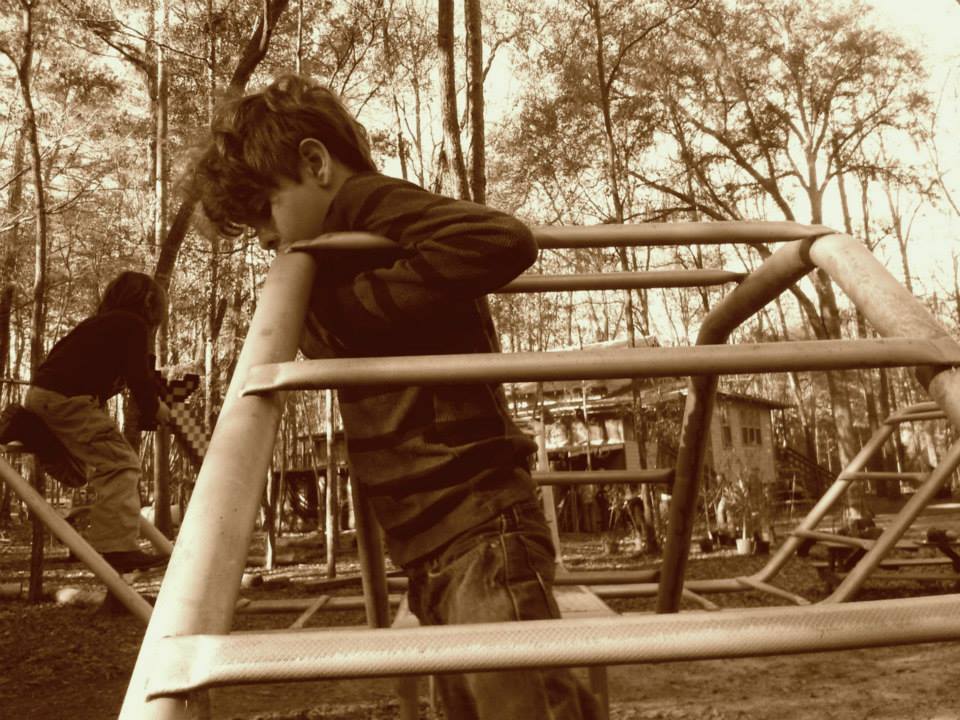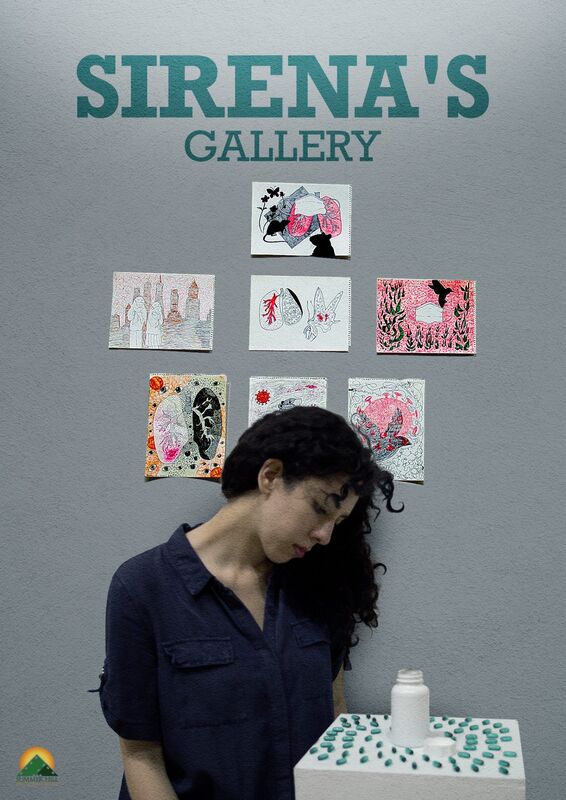|
The Breadcrumbs widget will appear here on the published site.
Beyond the Classroom and Any Arbitrary GradeBy Garrett Riggs QuailBellMagazine.com When I explain that my children go to a school that does not issue grades or have required classes, people look at me like I am crazy. “Well, how do they learn anything?” is usually the follow-up question. It takes a giant leap of faith to trust that your children will learn on their own. That humans are naturally curious should be rather self-evident to anyone who has a child or who has ever been a child (and, yes, there are people out there who are suspect in that latter category). Curiosity is what helped human beings figure out everything from rubbing two sticks together to make fire to putting people into orbit. Since the advent of standardized education, though, it has been easy to forget that humans are built to explore and learn. Many of us simply expect our children to have the same experience with school that we did—maybe you went to public school and turned out just fine; maybe private school or boarding school was your experience with the world of formal learning. Or, maybe, you were a secret autodidact, staying home with vague complaints of stomachaches or headaches, and catching up on learning by reading all the books at the local library (or if you’re a digital era baby, using the Internet as a tutor). I fit into that last group. For me, school was “day prison” and it was full of bullies and disruptive kids who kept everyone off track. I had little patience with busywork and cared even less about the social aspect of school. If I could have been locked in the library and left to my own devices, that would have been more productive. I might have found a reason math was valuable if I had stumbled onto it through a side door, such as reading Tom Stoppard’s Arcadia, which has a young heroine pursuing quantum mathematics as a central thread, or through studying about architecture and seeing how, yes, geometry does have its practical uses. Holes in the railing created by carpenter bees. Despite my disdain for the traditional classroom, when my own first-born was about to turn five, I enrolled him in our district elementary school. Academically, this was a deterrent to learning; sadly, it turned out that he was one of a handful of kids who had been read to or taught about things like colors, the basics of time (minutes, hours, days, weeks, months), or encouraged to figure out how things in the world around us are grouped and classified (e.g., animals > mammals > felines > big cats [lions, tigers, etc.] > house cats [grandpa’s cat, our cat, Hemingway’s six-toed cats). Because the teacher didn’t have to spend time teaching him these things, he was enlisted at the ripe old age of five to be a teaching assistant. He tutored his pint-sized colleagues on the names of the colors in the rainbow. He helped them learn sight words. And so on. He hated this. For him, school was not about discovery; rather, it became about being a combination lab rat and taskmaster. While he enjoys doling out chores to his younger sibling, he did not like being partially responsible for his peers’ successes and failures. Emotionally, this was a bad experience as well. He was expected to be a leader in the classroom, yet he still couldn’t tie his own shoes. When he got left on the playground the first week of school, he lost his trust in the adults’ ability to take care of him and his needs. He had been “rewarded” with outside time with another class since he was doing so well; his peers stayed inside at recess to work more on learning names of colors and practicing paste-eating abstinence. There was a parent-teacher conference just before the winter break and I confessed that we were considering moving our son out of the school for the next academic year. “Don’t wait until then,” the teacher said. She fixed me with an exhausted stare and said, “If you have any other option—even if you can homeschool—take him out now.” We didn’t think we had other options. Even with scholarships and sliding scale tuitions, we couldn’t afford the private schools in our area. Homeschooling, while appealing, was out because of the parental schedules. Just as we were resigned to leaving him in the district school, we heard about Grassroots Free School.  The “free” in the school’s name did not mean “no financial cost," but rather “intellectually free to explore.” There was no curriculum and no set schedule beyond the school’s basic operating hours. The school’s motto is “The World is my Classroom.” While the description conjured up hippie communes and peanut butter and apple slices for lunch, I decided it was worth checking out until we could find a more permanent solution. Even better, there was no lengthy waiting list for new student enrollment. “You have to read Summerhill before you come for a school visit,” director Pat Seery told me on the phone when I called to schedule a visit. “They have a copy at FSU’s library and I have copies here in my office if that one is checked out.” I went to the library and tracked down Summerhill and other writings by and about A.S. Neill. Summerhill opened in 1926 and originally catered to children who had been labeled “problem children” and delinquents. Neill believed these children needed love and understanding more than punishment. Neill’s school allowed children to grow emotionally, gave them power over their own lives, and encouraged them to develop at their own pace without “fear of and coercion by adults.” (Neill, 1966) At Summerhill, students took classes of their own choosing, worked one-on-one with Neill in therapy sessions, and took part in the weekly community meetings that were designed to help establish the community rules and address problems as they arose. The key component to the success of Summerhill seemed to be the universal equality of all participants—children and adults. Each person was as important as every other person and children were as valued as the adults. As Neill explained in Freedom Not Lincense, “In my book Summerhill, I pointed out that ‘It is this distinction between freedom and license that many parents cannot grasp. In the disciplined home, the children have no rights. In the spoiled home, they have all the rights. The proper home is one in which children and adults have equal rights.’" (Neill, 8-9) Painted hubcaps line the school’s front porch. While I found Neill’s views on sexuality and homosexuality a bit more typical of the time period in which he lived, the bulk of his ideas about education and child-rearing seemed pretty radical; I couldn’t imagine how he had managed to open a school that had thrived for nearly 90 years on these principles. Where did he find parents willing to throw caution and standardized education to the winds? Grassroots was modeled very closely on Summerhill. Director Pat Seery had visited the school a couple of years before Neill’s death and spent time with him and the students at the school. “It was revolutionary!” Pat recalled as he spoke with us on that first visit ten years ago. His blue eyes widened and he shook his head as if he had been slapped. “It was what I dreamed of as a child.” At Grassroots, each day is a new opportunity. The day’s offerings are written on the chalkboard in the main room of The Quiet Building. A few minutes before each class, a child walks around the grounds ringing a bell and announcing the class. Kids who want to take part go to class. Kids who do not, stay put. Many times, my sons were the first kids to arrive for the day and, one of the full-time teachers, Luis, always came out to greet them with a hug or some news. “Come see what the woodpeckers did last night,” he said one morning as my youngest put his lunchbox down on the bench that rings the porch. Luis showed us a spot on the railing where the birds had pecked away at the soft wood. “The carpenter bees make these beautiful holes,” Luis said, pointing to the perfectly round holes in one of the benches. “And their grubs can be a few inches in either direction from the hole. The woodpeckers were looking for the grubs.” He flicked a bit of splintered wood with his fingernail. “I guess I’ll have to replace this railing this weekend,” he said. He said he was debating whether to use pressurized wood because it would be cheaper or to use a piece of plastic wood because it was recyclable. “It is?” my son asked. “Oh yes,” Luis told us. “They make the boards from water bottles. I would rather do that, if it doesn’t cost too much.” The school runs on a shoestring budget. The sliding scale had a minimum monthly tuition of $50 from 1974-2014, but the parents voted to raise the minimum tuition to $75. Currently, the school does not accept funding from scholarship programs that would require a set curriculum or standardized tests. Accepting that funding would mean more money for the school, but it would also mean giving up some of the control of the school to outsiders. The buildings, much of the equipment, and most of the supplies are recycled, scavenged, and donated goods. The main building, called The Quiet Building, is a converted farm house that has a classroom, project room, computer lab/office, publications area, and a library. The Meeting Hall is where the kids can be loud. It used to be a church, and is now where drama, music, and art happen. It’s also where the kids play when the weather is bad. Outside, there are play spaces made from recycled tires and playground equipment purchased or donated from other schools. There are also things the kids and adults have built together over the years—a giant sandbox, a rope swing and climbing tower, a bike trail, a sports field, and a garden where students can sign up for a plot to tend for the school year. Students can also build forts on the school grounds, but they have to submit plans and apply for permits during Pow-wow, the weekly meeting where kids put the democratic system to work. Two students play on the climbing structure. Rules and problems are addressed at Pow-wow. If a child has a problem with another child or a member of the staff, they can bring up the other person in the weekly meeting. Both people share their side of the story and the group votes on a solution. It is the same with community rules (the rules dealing with safety are not up for discussion). Every so often, a student may call for a ban on something at the school—usually hand-held electronics and cursing are the targets. The student may lobby throughout the week, trying to get people on board for their cause. Students may write about the issue in the school paper. They present the issue and the pros and cons at Pow-wow and the people present vote. The Grassroots students learn a lot of valuable skills even if they may need some extra coaching in the academic areas they elect to ignore during the school day. **** I have decided to re-enroll my children at Grassroots for many reasons, but one of the strongest is my experience teaching at the college level and seeing how woefully underprepared students coming through the public school system have become over the past decade. I teach English and Humanities and both of those subjects require students to do a lot of writing and critical analysis. When I first started teaching at the college level in 2003, my students were bright and eager to learn and to participate in their own education. They sometimes struggled with writing anything that was not a standard five-paragraph theme with an introduction, three supporting paragraphs, and a conclusion, but they were willing to engage in discussions and enjoyed learning some of the more nuanced forms of writing and rhetorical strategy. As I write this in 2014, I am stunned by the drastic change in the students attending my classes. From freshmen to seniors, by and large, they are not prepared for college level writing and thinking. For me, it is the second part that most concerns me—the students are not able to think deeply and critically about anything. They do not know how to evaluate information, nor how to form and express an opinion. Their main concern is the grade and what will be on the test. After spending 12 years in a system completely centered on standardized testing, where every assignment is a practice for the big test at the end of the year, these students do not know how to engage with material or show that they have learned and retained anything. The classes I teach are Gordon Rule classes. This means the bulk of the grade is dependent upon a student’s writing assignments in the course. I don’t mind students turning up not knowing how to write a research paper; I can teach them how to organize and format a research paper or any other kind of writing assignment they may encounter in my class. What I can’t teach them is how to think. If they do not know how to read, watch, listen to, or observe something and to ask questions about it, I cannot help them. I can model for them how to evaluate information, but if they do not have curiosity to seek information or enough natural skepticism to question the validity of what they find, I am at a loss. Having complete focus on the Big Test is a huge disservice not only to the students going through the school system, but will also be a problem for the country as a whole when a generation enters the work force unable to organize information, make critical decisions, or innovate. All of us will pay the price for that when we have a generation of workers and decision-makers who need so much hand-holding to get anything done. My students care about grades, but not about learning. They send me emails all the time that ask, “What do I need to do to get an A in this class?” or “Can you bump up my test grade a point or two so I can get an A?” They are floored by the idea that they should be learning something in each class that they can take way beyond the classroom and any arbitrary grade. What does any of this have to do with Grassroots Free School? I have two children who have attended Grassroots off and on for a decade. My youngest has recently spent two years in the public school system. His first grade homework throughout the year was a series of exercises geared to help him learn how to take standardized tests. His reading homework was a miniature version of the reading comprehension section found on tests from the FCAT to the SAT. The sheer volume of homework for a first grader was daunting, but more troublesome was the fact that even though he got most everything correct, he didn’t really seem to retain it. The reading assignments weren’t books and stories that grab a kid and hook them with the joy of adventures to be found in the pages or even the fun of wordplay. The reading assignments were a collection of passages centered around sight words and concepts that would be on the Big Test. The math homework was the same. I suspect my son enjoyed history and art because they weren’t part of the Big Test prep material. The teachers could be a little more creative with the material and the kids could get swept up in the stories of the people who had changed the world or get immersed in a project that they could take ownership of. A tunnel made of tires. I decided at the end of the first grade year to re-enroll him at Grassroots. I also decided to re-enroll his brother so he could work on a high school graduation portfolio. My eldest attended Grassroots from kindergarten through middle school. He spent half a year in the public school system as a high school freshman, but was quickly bored by the assignments and the drama of high school social life. He wanted to concentrate on things that mattered. For him, that means computers, physics, philosophy, history, and politics. While his colleagues in high school were struggling with fill-in-the-blank worksheets after reading a passages, my son sat bored in the back of the classroom. The teacher in that class gave him permission to bring in a laptop so he could read and do research while the other students did the assignments. In another class where he struggled and asked for help, the teacher asked if he had taken notes. When my son said he had taken notes and showed his notebook, the teacher’s response was, “Well, then, you should know what you’re doing.” My son turned to YouTube and sought out lectures on the topic at hand. When his work drastically improved over the course of a week, the teacher accused him of cheating. He was bored by most classes and disheartened by the one he was struggling with. I saw his interest in learning quickly being killed off by the traditional approach to school. Here was a kid who could build a computer from scratch and who spent much of his free time listening to physics lectures—and who was ready to drop out. Sure, he wanted to go to college, but the next three years were going to be hellish and there was a good chance he was not going to finish high school if things continued the way they were. I had already decided to send the younger child back to Grassroots, but wondered if it would be possible for the older one to be re-enrolled as well. I could home school them. We could try virtual school or one of the other private schools in town. We could. But we won’t. Grassroots has been absolutely foundational in my older son’s fearless approach to learning. He is curious; he is opinionated; he is funny; he likes to engage in debate. He will do all right when he is on his own. I have no fear that he won’t find a job. He will likely just make his own. It’s not that he’s “that smart”; it’s that he has been intellectually free to explore the entire time he has been at Grassroots. Many of the core staff have a played a role in shaping my boys’ intellect. My oldest had the benefit of having Pat Seery around on a daily basis when he was first attending Grassroots. Pat got him engaged with words and language. Pat’s good humor and spirit certainly helped brighten my son’s days—something that was much needed at various times in his life, such as when his parents divorced or after he returned from an extended stay in Israel and witnessed a violent tribal feud. Pat and the other members of the staff provided him with stability and encouragement. They had known him for five years and were part of the extended family in many ways, so they each let him know they were available if he needed them (Luis often corralled him for assistance on projects at this time just so they had the opportunity to work side-by-side should my son feel the need to talk to someone.) Jan encouraged both of my sons’ analytical abilities. She would play cards or board games with them and engage them in conversations that centered on “what if”; Jan encourages them to think about possibilities and to speculate on “what would happen if I tried this.” She brings out the scientific method of inquiry with the kids through these conversations. (I wish I could say she had converted them over to gardening and growing their own food, but so far, they have resisted her efforts in this area—at least they have the opportunity.) Luis has probably had the most impact on the boys because he has been present for the longest time during their stay at Grassroots. His curiosity about the world and his self-discipline have been sources of admiration (and consternation at times) for the boys. Luis brings whatever he is reading up on into the conversation and spends a lot of time with the students, discussing how what goes on in the world impacts them and what they do impacts the world. Chloe and Kerrie have both nurtured the creative side of the kids. From storytelling and making books to theatrical productions, they have found ways to encourage each child to explore the arts and to see them in partnership with science and technology. They help make sure the kids at Grassroots really are well-rounded. All of the adults (including the part-time staff, volunteers, and other parents) have modeled teamwork and mediation for the kids. My older son has learned a lot from Pow-wow and the Family Meetings. He is not afraid to speak up if he sees something that is unjust; he is not afraid to negotiate or to stand up for himself. This is the kind of skill that is highly valued in the working world. The kids at Grassroots practice it all the time. The kids at Grassroots learn so many things that will be valuable all their lives. They are intellectually curious; they enjoy learning just to expand their understanding (not just to get a grade), so they will be lifetime learners; they are free to dig into any topic they like, so they learn how to do research and how to dig deep rather than skim and only learn what’s on the surface; they learn to take care of the world around them in real and significant ways, not just for one Earth Day project each year; they learn how to take care of each other and of themselves. These kids come out prepared for life. Bibliography Neill, A.S., Freedom Not License, New York: Hart Publishing Company, 1966. Images by Garrett Riggs, except “Drawing” by G. Assadi. #Imaginative #OurWorld #AnotherWorld #UnschoolingMovement #Education #ChildDevelopment #HowWeLearn Visit our shop and subscribe. Sponsor us. Submit and become a contributor. Like us on Facebook and follow us on Twitter.
Comments6/18/2014 10:43:30 am
I read Summerhill when it was first published. Though my work days were in public schools, I tried to use as much of Neill's philosophy as I could. I'm so glad you were brave and sensible enough to enroll your boys in GrassRoots. Good for you! Good for the boys! And three cheers for Grass Roots!
Garrett Riggs
6/18/2014 04:00:07 pm
You were such a wonderful teacher, Janet! It doesn't surprise me at all to find out you had incorporated some of Neill's ideas into your own teaching. Even though I went through the public school system, I was extremely lucky to have some of the best people as teachers and mentors--people like you--people who truly cared about the students as whole beings, not just their performance in the subject you were teaching. I am always deeply honored when you find some of my writing and take time to comment on it.
Kerrie Sandefur
8/29/2014 04:56:23 am
Garrett! What an amazing article! Sorry it took me so long to getting around to reading it. I would like to print copies of this for all of enrolled families and what can we do to get this article in the Democrat? Let's talk. Comments are closed.
|
|











